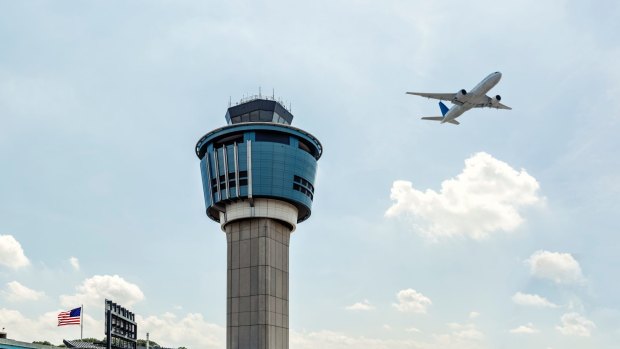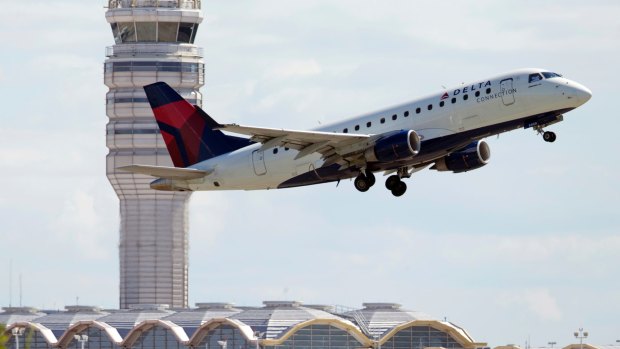By Justin Bachman

LaGuardia Airport in New York is located beneath some of the world's most congested airspace.Credit: iStock
For a commercial airline pilot, some landings are a relative breeze-think airports with long, clear runways located on flat land at sea level, with benign weather and modest traffic.
We're here to discuss the other kind.
The final approach and landing represent the most challenging aspects of a pilot's workload, and come with the most accidents. Consider airfields where congestion, geography, winds, altitude, and other factors can make the approach a bear. These airports can also test a pilot's judgment in terms of willingness to abort a landing and go around.
Honeywell Aerospace, a major aircraft avionics producer that's part of Honeywell International, compiled some of the most challenging US venues. The list isn't ranked in terms of difficulty, but Aspen/Pitkin County is widely known to pose a massive workload for aviators, and got a special nod from more than a dozen Honeywell pilots who were polled. Among others where the approach and landing can regularly be a hassle: Juneau, New York's LaGuardia, Washington's Reagan National, and San Diego airport.
Aspen/Pitkin County Airport, Aspen, Colorado
Few airports challenge a pilot to the same headache-inducing degree as Aspen, playground for the rich and famous. The approach involves descending into a narrow space surrounded on two sides by mountains and frequent cloud cover. On top of all that, the winds can shift rapidly, and gust wickedly. The Aspen approach is "like shooting through a mine shaft" with little margin for error, one pilot told the Los Angeles Times in 2001.
In March 2001, 18 people died when their Gulfstream charter jet from Los Angeles, flying off course, crashed into terrain short of the runway. Investigators cited numerous pilot errors during the nighttime approach. A private jet pilot also was killed in January 2014 during a failed approach. In the winter ski season, pilots must keep close watch on the minimum approach conditions, as weather can deteriorate rapidly. Here's a regional jet performing a "textbook" approach and landing in a winter snow.
Bert Mooney Airport, Butte, Montana
This airport is largely surrounded by steep terrain, and doesn't have a control tower. Bert Mooney also has cold-weather restrictions, requiring operating adjustments when the temperature drops to -2 Fahrenheit (-18 degrees celius). One other note to pilots: There are a lot of deer around.
Juneau International Airport, Juneau, Alaska
Surrounded by mountainous terrain, Juneau wins raves as a picturesque city but occasional jeers from pilots. The area also has an abundance of cloudy, drizzly weather, with low cloud ceilings. Here is a Microsoft Flight Simulator video of a typical approach into Juneau.
LaGuardia Airport, New York City
Ten miles east of Manhattan, LaGuardia sits beneath some of the world's most congested airspace, with two major international hubs just a few miles southeast (John F. Kennedy) and southwest (Newark Liberty). It also has a high-density flow of traffic-roughly 17 hours per day-owing to its location as the closest of all three to Manhattan. If you're flying into LaGuardia, grab a left-side window seat-that's where to get the better look at the Statue of Liberty and lower Manhattan on approach. Grab a right hand seat in the summer time and you might get a way-too-close-for-comfort look at sunbathers on Queens rooftops just before touchdown.
Laughlin/Bullhead International Airport, Bullhead City, Arizona
This west Arizona airport has mountains on three sides, north, east, and southeast, including what pilots call "terrain" on both ends of the 8500-foot (2591-metre) runway. As a result, departures require a steep rate of climb. Laughlin/Bullhead landed commercial service last month with a daily flight from Phoenix, so more pilots-and passengers-are holding on tight.
Mammoth Yosemite Airport, Mammoth Lakes, California
Mammoth Yosemite lies in a box canyon hard east of several major peaks in the Sierra Nevada mountain range, including the namesake ski resort. In winter, the season that garners most of the commercial air service, inclement weather can present a perpetual challenge.
Ronald Reagan Washington National Airport, Arlington, Virginia

Credit: AP
The District of Columbia has plenty of restricted, heavily guarded airspace. Veer off course or ignore air traffic control near the Capitol and you'll quickly find a fighter jet on your wing. These defenses also require some sharp 30-40 degree turns along the Potomac River when flying the "River Visual" approach to Reagan National Airport. (Passenger tip: Sit on the left for views of many of the major national monuments.)
San Diego International Airport, San Diego, California
Pilots report frequent gusty tailwinds that can require quick adjustments on approach. Arriving flights typically land to the west, which means passengers get a view of downtown office buildings and parking decks. Peer out the window when flying into the former Lindbergh Field-it's a landing you won't forget.
Telluride Regional Airport, Telluride, Colorado
At 9070 feet (2765 metres), Telluride is the highest-elevation commercial airport in America. It also features 1000-foot (305-metre) cliffs on both ends of the runway and strong vertical turbulence during winter months caused by the mountain winds. There are several videos of the approach into Telluride showing the sharp plateau on which the strip is perched. "Nothing you want to do tomorrow is worth risking your life and the lives of your passengers today!" the Telluride airport says in a notice to pilots.
Yellowstone Regional Airport, Cody, Wyoming
This airport has a few mountains in the vicinity, but no control tower. It also requires pilots to perform what is called a "non-precision" approach, a standard procedure for a pilot but one that doesn't offer any vertical guidance, requiring the aviator to calculate the rate of descent.
Bloomberg
See also: World's top 10 scariest airports for take-offs and landings
See also: World's safest airlines named in annual rankings
Sign up for the Traveller Deals newsletter
Get exclusive travel deals delivered straight to your inbox. Sign up now.